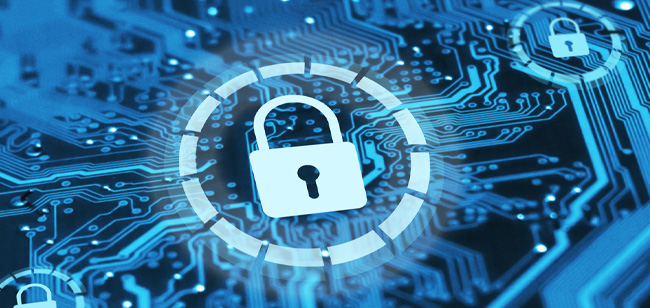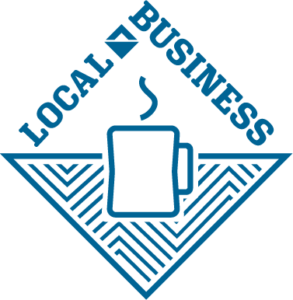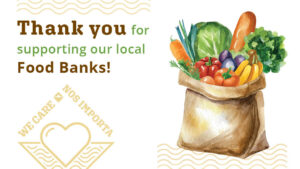SESLOC Fraud Center

SESLOC Fraud Center
Protect Yourself from the Latest Scams
One of SESLOC’s top priorities is educating and empowering members with
Fraud Prevention
While October is designated as Cybersecurity Awareness Month, our commitment to safeguarding your financial well-being extends throughout the year. We understand the prevalence of various scams and the importance of equipping our members with tips and resources to combat these threats. By offering year-round guidance, we aim to empower you with the knowledge needed to recognize and stop potential scams, thus strengthening your financial security.
– HOW TO REPORT SUSPICIOUS ACTIVITY –
SESLOC will never call, text or email you and ask for personal or confidential information. If you believe the communication is suspicious, do not respond, hang up immediately and report the incident to SESLOC at (805) 543-1816 or Send a Secure Message in Online Banking.
Common Types of Scams
SESLOC is dedicated to protecting your financial and personal information while keeping you informed about how to keep yourself cybersecure. Join us in learning how to recognize common scams and take proactive steps to safeguard yourself and your loved ones.
Phishing
Phishing deceives victims to divulge sensitive info or install malware. Here are red flags to watch for »
Sweetheart Scams
Sweetheart scams take advantage of victims looking for love. Learn how to avoid it »
Elder Schemes
Elder schemes steal money or personal info from older adults. Here is what to watch for »
Tax Fraud
Tax scams exploit tax regulations to steal money or personal info. Here are tips on how to avoid it »
Identity Theft
Identity theft is when personal info is stolen and used to commit fraud. Here are red flags to look out for »
Money Transfer App Scam
Money transfer app scams trick individuals into sending money through a digital platform. Here is how you can avoid it »
AI Scams
Artificial Intelligence (AI) scams use AI to commit fraud. Learn how to recognize the red flags »
Election Scams
Election scams phish for personal and/or financial info. Here is how you can avoid it »
Home Title Theft
Home Title Theft is when stolen info is used to transfer property ownership and borrow money against it. Here is how you can avoid it »
The Latest Fraud Advisories
Incidents Affecting SESLOC Members
At SESLOC, your safety is our top priority. We make every effort to ensure that your financial and personal information stay safe and that you are informed on the latest advisories that have affected our local community. Note: The following advisories displayed feature all past and present alerts that were sent out to members. Thank you to the members who reported these incidents, as your vigilance is crucial in helping us protect others.
Currently, no incidents have been reported that are widespread across SESLOC membership.
MEMBER ADVISORY: Beware of Tax Fraud Text Messages
SESLOC members have reported receiving fraudulent text messages claiming to be from the State of California Franchise Tax Board. These messages are fake. Please do not reply and do not click any links.
MEMBER ADVISORY: Beware of Phishing Scams
January 15, 2025 – SESLOC members have reported receiving fraudulent calls, emails and text messages asking them to verify if they authorized a transfer to an external account. The dollar amounts have ranged from $2,000 – $2,500. In some cases, the scammers spoofed the SESLOC phone number in order to appear more legitimate.
MEMBER ADVISORY: Phishing Attempts Are Now Widespread
Member Advisory
U.S. Consumer Alerts
At SESLOC, we are committed to ensuring our members have access to national consumer alerts issued by the Federal Trade Commission (FTC).
Stay One Step Ahead of Scammers This Holiday Season
Spotted must-have products at shockingly low prices? It could be a scam! While that e-bike or designer handbag may look tempting, fake sites and ads often steal logos and photos from legitimate businesses to trick shoppers. To keep your holiday shopping safe and stress-free, check out these tips from the Federal Trade Commission on how to spot deceptive offers.
Protect Yourself from Scams This Medicare Open Enrollment Period
Medicare’s Open Enrollment Period is now underway, making it essential to stay alert for scammers looking to steal your money and personal information. Here are some tips from the Federal Trade Commission (FTC) to help you stay alert to potential red flags.
Safeguard Your Cash: 3 Common Money Scams that Could Cost You
The Federal Trade Commission (FTC) has recently issued a consumer alert about three money scams that are gaining traction. Let’s take a closer look at the tactics scammers are using to try to deceive you and the tips the FTC has provided to protect yourself.
QR Code Scams: Protecting Your Finances in the Digital Age
In today’s digital world, QR codes have become a staple of convenience, allowing us to access websites, make payments and gain information with a simple scan. However, the ease of accessibility has also made QR codes a prime target for scammers looking to exploit unsuspecting users. Here you can find practical tips for identifying suspicious QR codes and learn strategies to safeguard your personal information.
Skimming and Gluing: Two Criminal Practices to Watch For
Now, more than ever, it’s important to safeguard sensitive card information to prevent an interruption in your ability to make important purchases. Be sure to report a lost or stolen card to your financial institution immediately.
Another Data Breach in the News? Don’t Get Data Breach Fatigue
A quick web search for “data breach” reveals countless recent hits detailing major data breaches. One of the biggest risks following a data breach is that scammers could use your stolen personal information to open a loan or a line of credit in your name, potentially damaging your credit score or leaving you to pay for the fraudulent charges.
Are You a Target This Tax Season?
This year, tax crimes have become more complex and sinister than ever before, including scams like identity theft, phishing, fake charities, false claims, and more. This article will cover new fraud schemes and reoccurring ones in hopes of helping you understand what to watch for and how to protect yourself and your loved ones.
Amazon Impersonators Are Stealing Millions and They’re Targeting All of Us
According to the Federal Trade Commission, between July 2020 and June 2021, 96,000 reports of “Amazon impersonation” were filed. Six thousand of the targeted individuals lost money in the scam, with reported losses totaling more than $27 million. The real numbers are likely to be significantly higher, because not all instances of fraud and attempted fraud are reported.
Triangulation Fraud and How You Can Be an Unwitting Participant
Identity theft continues to be more than just a costly headache. Once the bad guys have your identity information they can make repeated attempts to try to access your accounts, apply for credit in your name, and even steal your tax refund. This month we’re going to dig into some lesser-known, proactive steps you can take in the new year to protect yourself from becoming the target of identity fraud.
Social Media: Five Scams that Work
We want to alert you to social media scams that you may not be thinking about. Being alert to potential scams is the best way to protect yourself against fraud and identity theft.
Look Out for Child Tax Credit Advance Scams
Recently, the first payments for the Child Tax Credit Advance from The American Rescue Plan Act of 2021 went out to qualified recipients. Shortly after, the IRS warned recipients about an increasing number of social engineering scam attempts.
SESLOC Programs & Services
1. The primary accountholder can file a claim for any phones owned by them. For additional information about the services including terms, conditions and limitations, please visit sesloccares.nxgstrategies.com
Fraud Monitoring Service for Visa Debit and Credit Cards
The Fraud Detection and Notification System continually monitors the accounts of our Business and Consumer Visa cardholders to watch for suspicious debit, credit or ATM card activity, and notifies you if fraudulent activity is suspected.
HomeFREE Checking ID Theft + Mobile program
SESLOC has partnered with NXG Strategies—a leader in identity theft remediation and data breach response—to offer an Identity Theft program exclusively for HomeFREE CheckingTM primary accountholders. With your HomeFREE Checking account, you have access to free identity theft recovery and mobile phone coverage, plus insurance coverage up to $500 minus a $50 deductible for your cell phone’s repairs or replacement due to accidental damage, mechanical failure or theft.1

6 Cybersecurity Tips for Online Banking

Online Banking is safe, but we strongly recommend you take these reasonable precautions:
1. Use a strong password or long passphrase — Make sure it includes a mix of letters, numbers and symbols. Avoid dictionary words, pets’ names, or trivial combinations of words and numbers. Hackers can crack a password like Summer2023 or $ummer2023 in less than one second. Try turning a memorable phrase into a secure password or use an entire phrase that only you would know, and remember to mix in cases, numbers and symbols. If your password is stolen, change it and tell us right away.
2. Never reuse a password on multiple sites — If a hacker cracks one password, they will try it on multiple sites.
3. Look for the lock — The lock icon next to the web address in your browser window indicates the webpage you are visiting is secure.
4. Keep your computer up to date — Remember to run updated malware protection, also known as antivirus software.
5. Avoid public WiFi for Online Banking — Hackers can create rogue access points on WiFi networks to monitor activity, and can even create their own network that looks legitimate. If you need to use public WiFi, consider using a VPN.
6. Set up alerts — Get a text or email notification about activity on your SESLOC account. Log into Online Banking and select the three dot (…) More Links icon in the menu, then click Alerts. Check your settings for your Subscription Alerts.

10 Tips for Strong Passwords
A strong password and good cybersecurity habits are essential for protecting your accounts. Here are 10 tips:
1. The longer, the better — A passphrase is even better than a password because length makes it harder to crack. Try turning a memorable phrase into a secure password or use an entire phrase that only you would know.
2. Mix it up — Make sure it includes a mix of letters, upper and lowercase, numbers and symbols — even spaces.
3. Know what to avoid — Avoid dictionary words, pets or children’s names, hobbies or trivial combinations of words and numbers. Hackers can crack a password like Summer2022 or $ummer2022 in less than one second, or might peep your social media accounts for insight into names or interests.
4. Never reuse a password on multiple sites — If a hacker cracks one password, they will try it on multiple sites. Check out a password manager to keep track of all your different passwords.
5. If your password is stolen, change it and tell us right away.
6. Look for the lock! A lock icon before the URL indicates the webpage you are visiting is secure.
7. Always update — New cybersecurity threats are constantly being introduced, and software updates contain important security measures. Keep your computer up to date and run updated malware protection (aka antivirus software).
8. Avoid public WiFi for Online Banking — Hackers can create rogue access points on WiFi networks to monitor activity, and can even create their own network that looks like a legitimate one. Use your private, secured WiFi or cellular data instead.
9. Don’t share — Never share your password or security codes with anyone.
10. Use multi-factor authentication — Layer your security by enabling multi-factor authentication, which will require an additional step (like texting you a special code) to access your account.
SESLOC’s Strategies for Cybercrime Prevention
1. SESLOC performs Business Continuity tests annually via a simulated cybersecurity attack. This process enables each business unit to go through a documented process of handling an event such as this. We understand each incident is unique, but this annual test provides us a valuable framework to identify any gaps and address them.
2. SESLOC has an intrusion audit performed on an annual basis to evaluate our technology security posture and cyber incident readiness. While we have had positive results from these audits in the past, we continue to be diligent about improving our security.
3. SESLOC works with a third-party cybersecurity forensic team who would be partnering with us in the event of an attack.
4. SESLOC also trains and reiterates frequently to SESLOC employees the importance of taking their time with emails and not clicking on links that they are unsure of. Note that at any time, employees are encouraged to reach out to IT Security if they are unsure of an email, its source and its content.
5. SESLOC digital eStatements and documents are securely encrypted, convenient and archived in Online Banking for 24 months. Going paperless means sensitive information is being delivered directly to the member, instead of potentially being stolen out of a mailbox.
6. SESLOC Online Banking uses an encrypted connection between a member’s device and the system.
7. Online Banking enrollment requires key information to match, plus confirmation to a telephone number already on file with SESLOC.
8. Multifactor authentication is required when using Online Banking, as well as a Secure Access Code when accessing on a new or unregistered browser.
9. SESLOC protects members against unauthorized withdrawals from their account. We encourage members to review their transactions and statements frequently, and report anything unusual right away. The sooner we know, the sooner we can protect you and stop any losses.
10. SESLOC provides informational webinars, blogs and resources to educate members about cybersecurity best practices for prevention and staying safe online.






































